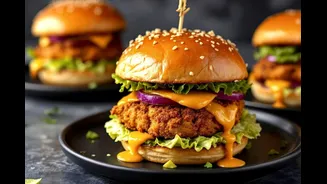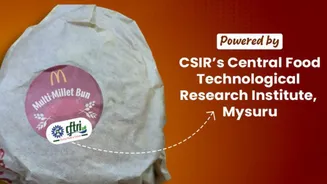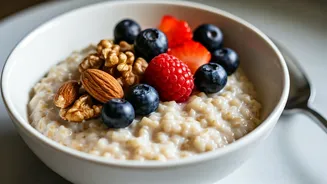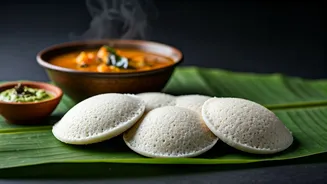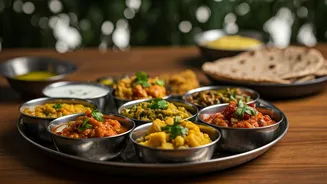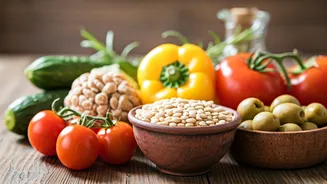Move over plain white burger buns, the fast-food world is getting a nutritious upgrade. In India, McDonald’s has introduced a multi-millet bun made of five superfood millets (bajra, ragi, jowar, proso
and kodo). This trend is catching on, and it presents a great opportunity to create your own healthier burger at home.
Why Millets in Burgers?
Millets boast an impressive nutritional profile compared to refined flour: they are high in dietary fibre, plant protein and essential micronutrients. According to the food-technology team that worked with McDonald’s India, these buns incorporate millets at around 22 % of the total bun mix, improving goodness without losing the burger experience.
However, and this is important – adding millets alone does not automatically make a burger healthy. The patty, sauces, cheese and frying method still play a big role. Food-science experts caution that the base is better, but the full meal can still be ultra-processed.
Why You Should Try Homemade Millet Burgers
By making your own version:
- You control the bun ingredients (less refined flour, more whole grains and millets)
- You control the patty (lean meat, legumes, vegetables)
- You control the sauces and cheese (less salt, less processed fat)
- You can focus on fresh toppings and home-baking instead of deep-frying.
In other words: same idea as the fast-food trend, but more mindful and suited to your dietary goals.
Home Recipe: Millet Burger with Homemade Bun and Patty
Ingredients for Millet Buns (makes 6)
- 100 g whole-wheat flour
- 100 g millet flour mix (you could combine equal parts bajra, ragi and jowar)
- 1 tsp dry yeast, dissolved in ½ cup warm water
- 1 tsp sugar, ½ tsp salt
- 1 tbsp oil
- ¼ cup lukewarm milk or water
- 1 egg (or ½ banana for vegan version)
Mix the flours, salt and sugar. Add the yeast-water and egg or banana, knead into dough with the milk/water. Rest for 45 min to 1 hour until doubled. Shape into 6 buns, bake in pre-heated oven at 190 °C for 15-20 minutes, or lightly pan-toast if preferred.
Ingredients for the Patty
You have two simple options:
- Lean meat version: 200 g chicken breast (minced), 1 small grated onion, 1 clove garlic (minced), salt and pepper, and chopped coriander. Form into 2 thick patties, pan-cook with minimal oil.
- Veggie-legume version: 1 cup boiled and mashed black chickpeas or kidney beans, ½ cup grated carrot, ¼ cup chopped spinach, 1 tbsp oats, salt, pepper and spices like paprika. Shape into patties, coat lightly in whole-wheat crumbs and pan-cook.
Assembly & Toppings
- Lightly toast your millet buns.
- Place lettuce, tomato slices, onion rings.
- Add the patty, a slice of cheese if you like (or a plant-based slice), and a dollop of plain yoghurt-mint sauce or avocado mash instead of heavy mayo.
- Cap with the top bun. Serve with a side salad or baked sweet-potato fries.
Tips for Making It Healthier
- Use minimal oil for cooking: 1 tbsp olive or avocado oil is enough.
- Choose lean protein or legumes for your patty to keep saturated fat in check.
- Opt for home-prepared or low-salt sauces instead of high-salt processed ones.
- Load up on veggies and fresh greens in the burger — they boost fibre and micronutrients.
- If you’re watching carbs, you could halve the bun size or match one regular bun + one open-face style.
Things to Keep in Mind
- Even a millet bun doesn’t cancel out an overly heavy or processed “burger meal”: think of the burger as a package — patty, bun, sauce, sides.
- Millets are great, but they’re still best paired with fresh, minimally processed ingredients to deliver full health value.
- If you bake your buns, you can avoid added preservatives often present in store-bought buns.
- If you have a gluten sensitivity, ragi and jowar are helpful, but whole-wheat flour may need to be replaced fully by millet-only or gluten-free mixes.
Why the Trend Is Bigger Than Taste
This push by McDonald’s didn’t happen in isolation — it ties into India’s larger “millet revival” movement and a global push toward more sustainable, nutrient-dense grains. Millets consume less water, thrive in warmer climates and diversify dietary grains beyond rice and wheat. By embracing this shift, your homemade burger can also tap into the sustainability story.
If you want to ride the trend but do it with your own healthy spin, homemade millet burgers are a smart place to start. You get the trendy grain switch (millet for the bun), but you control every other piece of the burger puzzle. Done well, you get flavour, satisfaction and better nutritional scroll for your plate.
Next time you’re craving a burger but want smart eats, swap in the millet bun, match it with a thoughtful patty and skip the fryer — your body (and taste buds) will thank you.
